 We all know that the biggest health risk for our population is the rapidly rising obesity rate. An increasingly sedentary lifestyle, longer working hours, and a food-focused culture means obesity is the number one risk. As a result, massive weight loss surgeries are becoming increasingly popular. Join Dr Drielsma as he discusses the different types of bariatric surgery and post-weight loss procedures!
We all know that the biggest health risk for our population is the rapidly rising obesity rate. An increasingly sedentary lifestyle, longer working hours, and a food-focused culture means obesity is the number one risk. As a result, massive weight loss surgeries are becoming increasingly popular. Join Dr Drielsma as he discusses the different types of bariatric surgery and post-weight loss procedures!
Bariatric Surgery for Massive Weight Loss
Obesity rates have garnered a lot of media attention, especially in the last few years. Shows like “The Biggest Loser” have helped further the trend towards healthier bodies and diet. Further, with obesity now classified as a disease, there has been an increased conversation between doctors and patients about the dangers of obesity. While diet and exercise are the best options for those looking to lose weight, for some individuals a surgical option can aid their weight loss journey. Bariatric surgeons specialise in procedures to install gastric bands and gastric sleeves to help with weight loss. There are a number of different types of bariatric surgery:
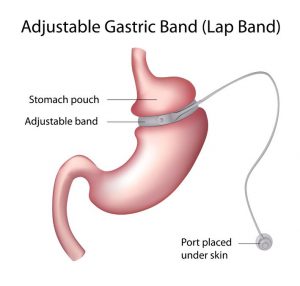 Gastric Lap Band
Gastric Lap Band
Lap banding involves placing a small, inflatable silicone band around the upper portion of the stomach. This leaves the rest of the stomach intact. The small pouch created by gastric banding aims to slow down and limit how much food you eat, reducing calories. It is the most non-invasive and can be easily reversed.
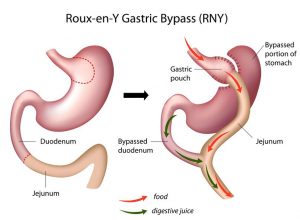 Gastric Bypass
Gastric Bypass
A Bypass – or Roux-en-Y Bypass – splits the stomach into two parts, creating a small pouch. This pouch connects to the small intestines, creating a smaller stomach. The secondary part of the bisected stomach remains healthy as it remains connected to the blood supply. As a result, you still have the option to reverse the procedure after weight loss.
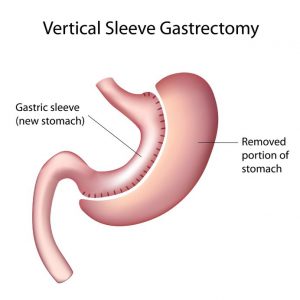
Sleeve Gastrectomy
This procedure involves the surgeon removing approximately 85% of the stomach. The remaining stomach is then stapled or stitched together to create a sleeve shape to reduce how much food your stomach can hold and minimise hunger-inducing hormones. By not bypassing the intestines, vitamin and nutrient absorption is not affected as much.
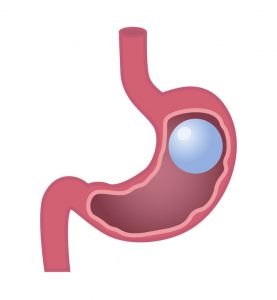 Gastric Balloon
Gastric Balloon
Like Gastric Banding, a Gastric Balloon is a less invasive procedure. A small, silicone balloon is placed in the stomach and inflated to decrease the space for food and digestion. As a result, it creates a feeling of fullness and reduces appetite. The balloon is a temporary solution and only lasts for 6 months. It is best for patients who only need to lose a small amount of weight (around 10-30kg).
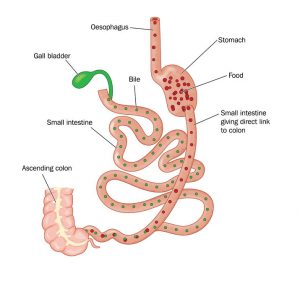 Duodenal Switch
Duodenal Switch
A more serious operation, the duodenal switch reconfigures and re-routes the stomach. Around 85% of the stomach is removed and reshaped similar to a sleeve gastrectomy. This new stomach is then rerouted to the small intestine. It is a lengthy surgery, performed in two stages over 6-12 months. But it does boast the largest, long term weight loss and health improvement of other bariatric procedures.
What Happens After You Lose the Weight?
Many patients believe that bariatric surgery is the only procedure they’ll need to get their ideal body. However, with weight changes, often our skin doesn’t change with our body. This means patients are burdened with everything from large sections of stretch marks that can be prone to skin tears, to excessive skin issues. Further, many patients feel demoralised and dissatisfied with their bodies as excessive skin folds and stretch mark scarring can mask natural body contours and curves.
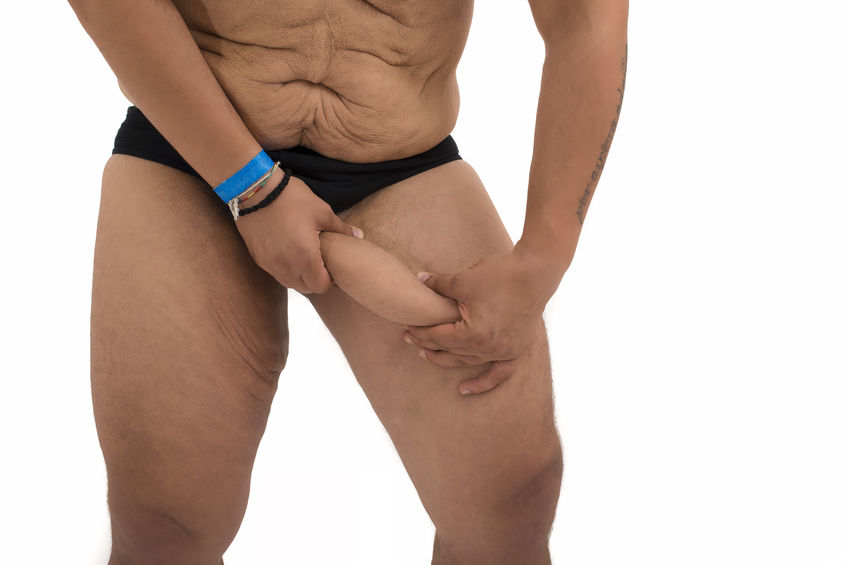
This excess skin doesn’t look attractive or healthy, and can cause issues with the body from skin infections to muscle and joint pain caused by the weight of the excess skin. So it is no surprise that post-weight loss procedures are also rising in popularity.
Post Weight Loss Procedures
There are a number of post significant weight loss procedures that can help patients finally realise their true, natural beauty. These contouring surgeries include body lift, tummy tucks, thigh lifts and arm lifts to deal with excess skin issues. Face surgeries are popular as well, with a wide varieties of face lifts and neck lift procedures to correct excess skin issues.
However, the focus of contouring surgery is not to lose weight but to improve your overall look after weight loss. While this can include removing small pockets of stubborn fat, body contouring is not a replacement for weight loss or weight loss surgery.
 You Need a Qualified Plastic Surgeon
You Need a Qualified Plastic Surgeon
Many patients make the mistake of seeing a general surgeon, or even a general practitioner, for their post weight loss surgery. Unfortunately, these doctors are not trained in the specific requirements of plastic surgery. As a result, many patients experience incomplete – or botched – tummy tuck procedures that do not address underlying issues like torn abdominal muscles.
This is due to the fact that no two people are the same, so no two body contouring journeys are the same. Each person has unique needs for one or more combined procedures and need a highly experienced plastic surgeon who can customise procedures to create the most natural look for a patient.
If you wish to discuss your weight loss journey, or your post-weight loss journey, or find out more on the different types of bariatric surgery? contact Dr Drielsma today for your personalised consultation!
